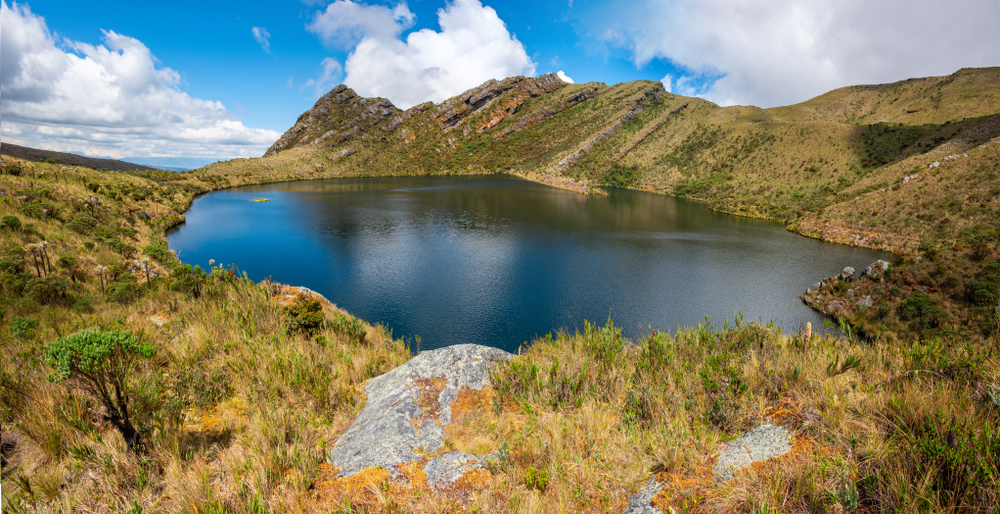Chiribiquete Overview
Chiribiquete National Park, known as Parque Nacional Natural Serranía de Chiribiquete in Spanish, is the largest national park in Colombia, covering approximately 17,000 square miles (44,000 square kilometers) in the Amazon basin.
Located in the departments of Guaviare and Caquetá, this remote and vast protected area is characterized by dramatic table-top mountains, known as tepuis, that rise abruptly from the dense rainforest. These ancient rock formations, some towering over 3,000 feet, are adorned with pre-Columbian rock art, believed to be over 20,000 years old. The park’s landscape is a striking mix of thick Amazonian jungle, winding rivers, and open savannas, creating an ecosystem that is both diverse and largely unexplored.
The park’s biodiversity is exceptional, supporting an array of species that thrive in its dense forests and isolated tepuis. Among its most notable mammals are jaguars, pumas, and tapirs, which roam freely in this protected environment.
The elusive giant otter and pink river dolphin can be found in the waterways, while numerous primates, such as howler monkeys and squirrel monkeys, add to the richness of the region.
The birdlife is equally remarkable, with more than 500 species recorded, including the harpy eagle, macaws, and the rare Chiribiquete emerald hummingbird, an endemic species found nowhere else on Earth. The dense vegetation of the park is made up of ancient Amazonian rainforest, interspersed with unique plant life adapted to the rocky tepui formations.
One of the park’s most remarkable features is its collection of ancient rock paintings, which are spread across the tepui walls. These pictographs, depicting animals, humans, and hunting scenes, are a vital cultural and archaeological treasure, offering a glimpse into the spiritual and daily lives of the region’s early inhabitants.
Due to its ecological and cultural significance, Chiribiquete was designated a UNESCO World Heritage Site in 2018. The park’s remote nature makes it one of the least accessible national parks in the world, with no official infrastructure for visitors. The only way to see Chiribiquete is from the air, with scenic flights offering breathtaking views of the tepuis, rivers, and seemingly endless rainforest canopy below.
Conservation efforts in Chiribiquete are focused on protecting its vast biodiversity and preventing illegal activities such as logging, poaching, and land encroachment. The Colombian government has expanded the park’s boundaries multiple times to ensure greater protection, and Indigenous communities, though not residing within the park, play a crucial role in safeguarding the surrounding areas.
Despite these efforts, threats from illegal mining and deforestation continue to pose significant challenges. However, the park’s status as a UNESCO site has strengthened its protection and global recognition, ensuring that its natural and cultural treasures are preserved for future generations.













































































